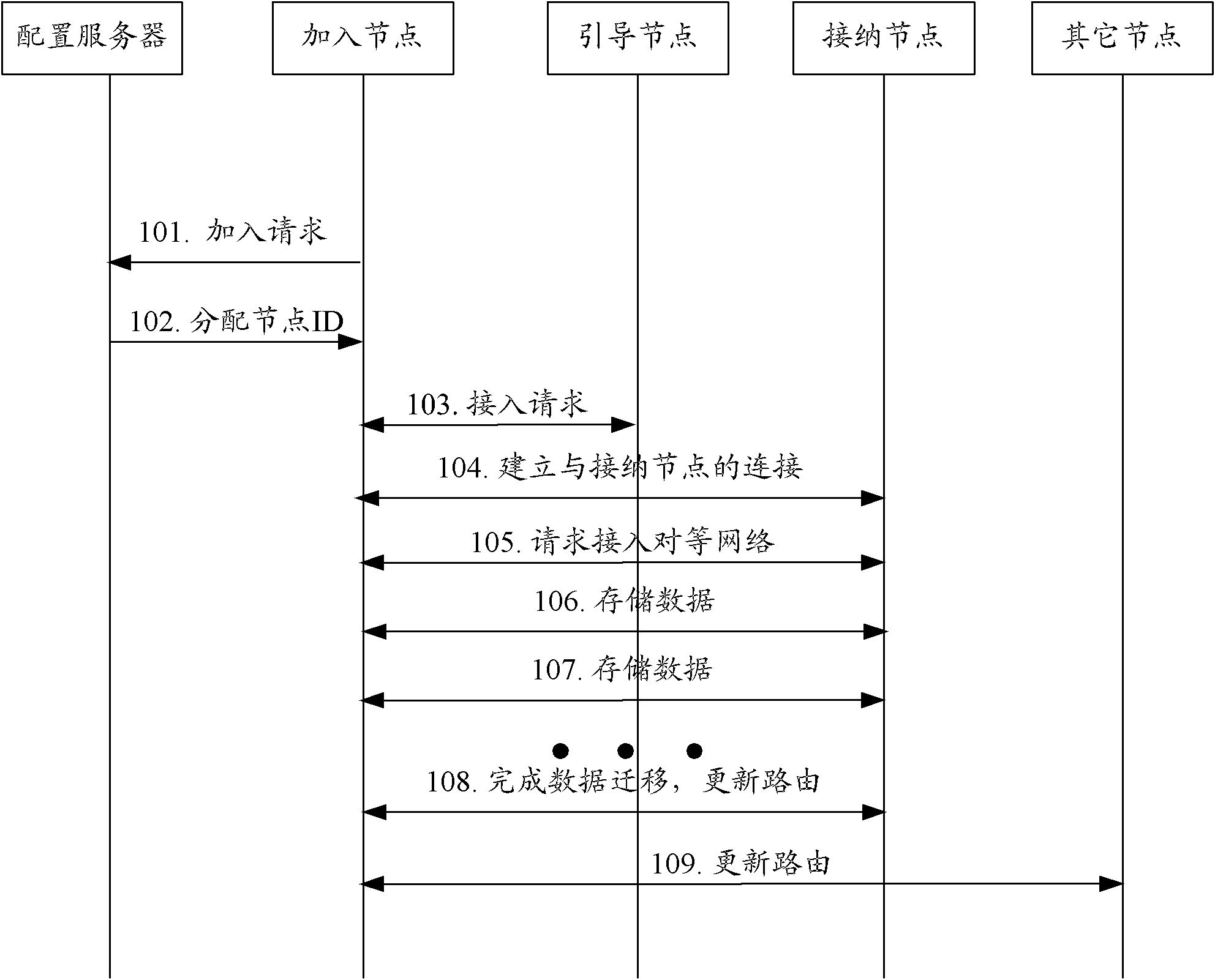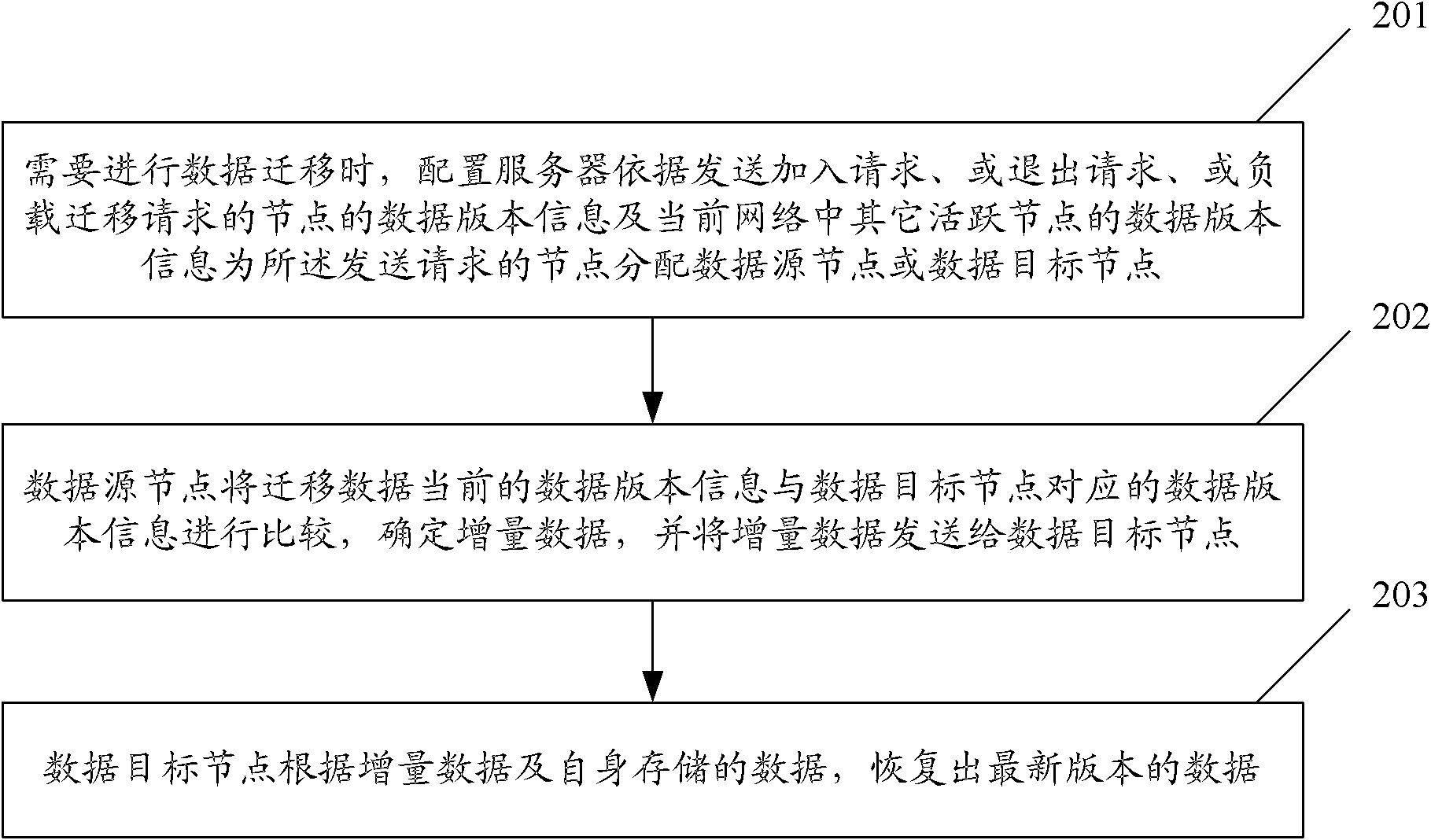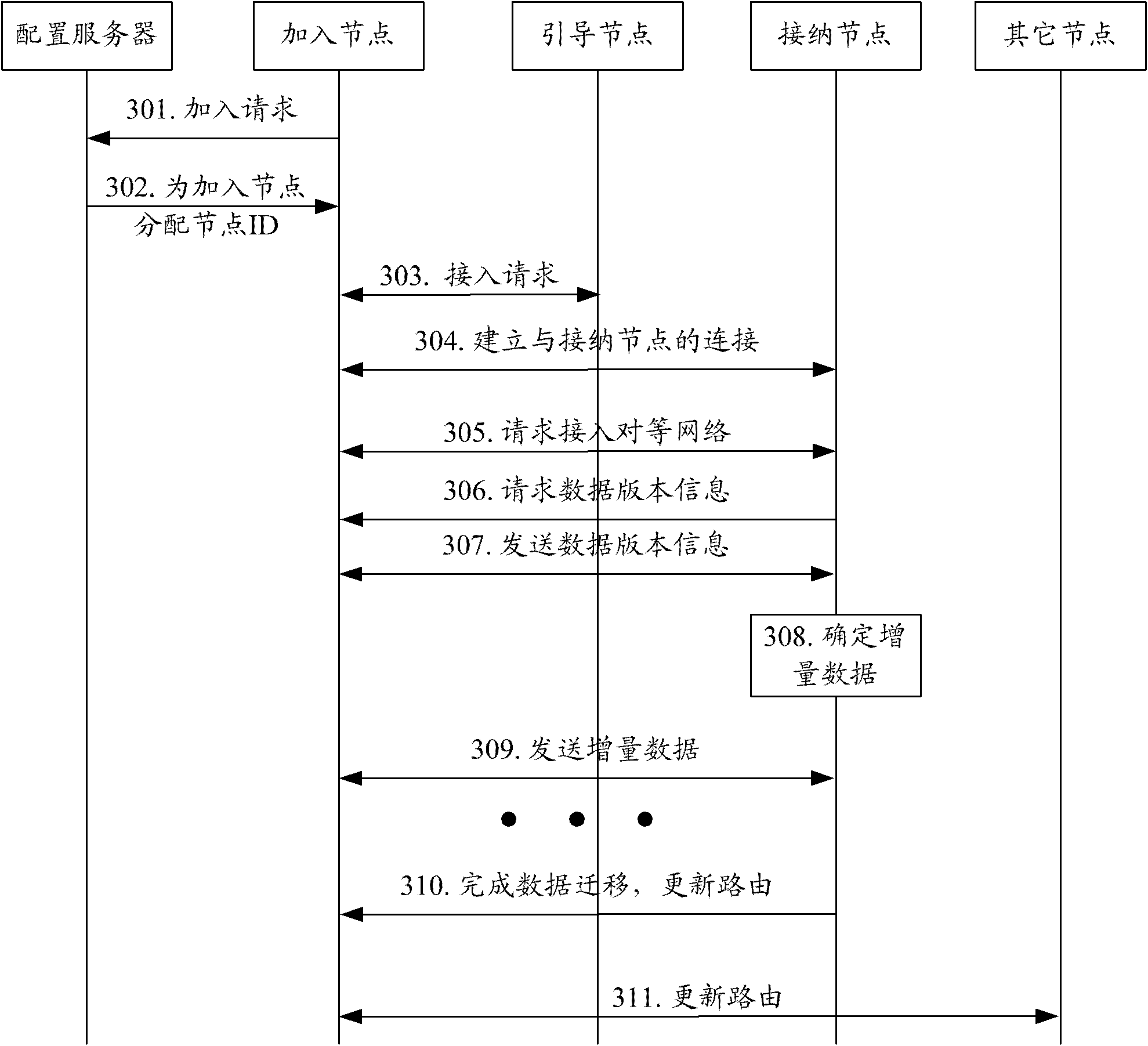Method and system for data migration in peer-to-peer network
A peer-to-peer network and data technology, applied in the network field, can solve the problems of not considering adding node data information, a large amount of network data, and no connection, so as to reduce the transmission volume, ensure normal operation, and improve speed and reliability. Effect
- Summary
- Abstract
- Description
- Claims
- Application Information
AI Technical Summary
Problems solved by technology
Method used
Image
Examples
Embodiment 1
[0067] The application scenario of this embodiment is: a node joining process. In the following description, a node that requests to join is called a joining node, and a node that is currently responsible for storing the data acquired by the joining node is called an accepting node. This embodiment realizes the method of selecting data migration target node and data migration, such as image 3 shown, including the following steps:
[0068] Step 301: If the joining node wants to join the P2P network, it first sends a joining request to the configuration server;
[0069] Here, the joining request includes data version information stored locally at the joining node;
[0070] The data version information refers to information that the configuration server can determine a suitable node ID according to the data version information and its own related information. The data version information may specifically be: a data version number, and / or a modification Timestamp, and / or summar...
Embodiment 2
[0095] The application scenario of this embodiment is: a node exit process. In the following description, the node that requests to exit is called the exit node, and the node that is about to take over the migrated data is called the new responsible node. This embodiment implements the method of data migration, such as Figure 4 shown, including the following steps:
[0096] Step 401: If the exit node wants to exit the P2P network, it first sends an exit request to the configuration server, requesting the configuration server to provide a suitable new responsible node;
[0097] Here, the exit request includes data version information locally stored by the exit node.
[0098] Steps 402-403: After receiving the request, the configuration server requests the locally stored data version information from a suitable node in the P2P network; after receiving the request, the node sends its own current data version information to the configuration server;
[0099] Here, the data vers...
Embodiment 3
[0124] The application scenario of this embodiment is: a node overload process. In the following description, a node that is overloaded and requests load migration is called an overloaded node, and a node that is about to take over the migrated data is called a light-loaded node. This embodiment implements the method of data migration, such as Figure 5 shown, including the following steps:
[0125] Step 501: The overloaded node wants to migrate part of the data to other nodes, firstly sends a load migration exit request to the configuration server, and requests the configuration server to provide a suitable light-loaded node;
[0126] Here, the load migration request includes data version information stored locally on the overloaded node.
[0127] Steps 502-503: After receiving the request, the configuration server requests the locally stored data version information from the appropriate light-loaded node in the P2P network; after receiving the request, the light-loaded node...
PUM
 Login to View More
Login to View More Abstract
Description
Claims
Application Information
 Login to View More
Login to View More - R&D
- Intellectual Property
- Life Sciences
- Materials
- Tech Scout
- Unparalleled Data Quality
- Higher Quality Content
- 60% Fewer Hallucinations
Browse by: Latest US Patents, China's latest patents, Technical Efficacy Thesaurus, Application Domain, Technology Topic, Popular Technical Reports.
© 2025 PatSnap. All rights reserved.Legal|Privacy policy|Modern Slavery Act Transparency Statement|Sitemap|About US| Contact US: help@patsnap.com



